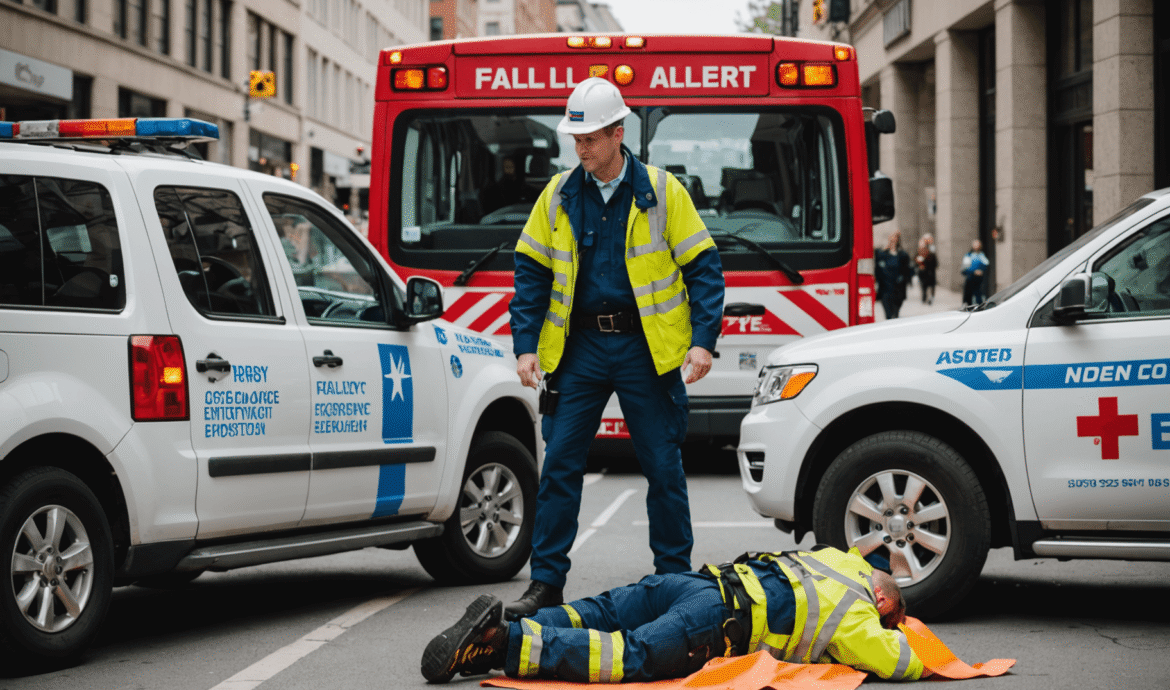
Automatic Fall Alerts for Faster Emergency Response
GeneralFalls are a leading cause of injury among older adults and individuals with mobility challenges. According to the CDC, one out of four seniors experiences a fall each year, with many resulting in serious injuries such as fractures or head trauma. The speed of emergency response after a fall can make the difference between a minor incident and a life-altering event. Yet, in many cases, falls go unnoticed for critical minutes or even hours before help arrives.
This is where technology steps in to transform safety measures. Automatic fall alerts are devices designed to quickly detect when a fall occurs and notify caregivers or emergency services immediately. These systems aim to slash response times and ensure that help reaches those in need without delay. As the population ages and the desire for independence grows, understanding how these alerts function and their benefits becomes essential for families, caregivers, and individuals alike.
Why Automated Fall Alerts Are Vital for Immediate Emergency Response
The Impact of Faster Response Times
When someone falls, every second counts. Prompt assistance can prevent further injury, reduce complications, and even save lives. With manual monitoring, delays can happen due to forgetfulness or unavailability of caregivers. Automated fall alerts eliminate these gaps by providing immediate notifications, thereby reducing the time between the fall and emergency intervention.
Reducing Fear and Increasing Independence
For many seniors or individuals with health conditions, living independently means balancing safety with autonomy. Knowing that a system will quickly alert help after a fall can alleviate anxiety, encouraging more confident living. It allows users to maintain their routines without constantly worrying about potential emergencies.
How Do Automatic Fall Alert Systems Work?
Core Components of Fall Detection Technology
- Sensors: Devices often use accelerometers and gyroscopes to detect sudden movements characteristic of a fall.
- Connectivity: Once a fall is detected, the system communicates via Wi-Fi, cellular networks, or Bluetooth to send alerts.
- Notification Platform: Alerts are sent to designated contacts or emergency services through calls, texts, or app notifications.
Types of Fall Alert Devices
There are several options available, ranging from wearable pendants and wristbands to stationary home sensors. Wearable devices are popular because they can be carried or worn at all times, while home sensors provide coverage within a designated living space, automatically detecting falls without user intervention.
Advantages of Automatic Fall Alerts for Caregivers and Families
Enhanced Peace of Mind
Knowing that a fall will trigger an immediate alert helps caregivers feel more confident in the safety of their loved ones. It minimizes worry, especially when they cannot be physically present at all times.
Streamlined Emergency Response
Early notification allows emergency responders to arrive faster, often within minutes. Quick response can prevent complications such as hypothermia, dehydration, or worsening head injuries. Considering that older adults are especially vulnerable, speed can significantly influence outcomes.
Reducing Hospitalizations and Long-term Complications
Rapid assistance helps stabilize injuries, potentially avoiding hospitalization or minimizing recovery time. This can lead to better health outcomes and reduce healthcare costs over time.
Selecting the Right Automatic Fall Detection System
Criteria for Choosing Reliable Devices
- Accuracy: The system should minimize false alarms while reliably detecting genuine falls.
- Ease of Use: User-friendly interfaces for both the wearer and caregivers are essential.
- Connectivity: Ensure compatibility with existing smartphones or alert systems.
- Battery Life: Long-lasting batteries reduce maintenance and ensure continuous protection.
- Support and Service: Reliable customer support can make setup and troubleshooting smoother.
Considering Additional Safety Features
Some devices offer supplementary features such as medication reminders, GPS tracking, or health monitoring. While these extras can be beneficial, the primary focus should be on accurate fall detection and prompt alerting. For an in-depth understanding of what features are must-haves versus extras, click to find out more.
Practical Tips for Implementing Automatic Fall Alert Systems
Involve the User in the Selection Process
Engage the individual in choosing a device to ensure comfort and compliance. A device that is too bulky or complicated may be left unused, defeating its purpose.
Regular Testing and Maintenance
Schedule routine checks to verify that sensors and alert mechanisms function correctly. Regular updates and battery replacements are crucial for consistent protection.
Combine Technology with Environment Safety Measures
Use additional safety modifications around the home—such as grab bars, non-slip mats, and improved lighting—to further decrease fall risks and complement alert systems.
The Future of Fall Detection and Emergency Response Technology
Emerging Innovations
Advancements like AI-powered systems and integration with smart home devices promise increased accuracy and more proactive safety measures. For example, some future systems might predict fall risks based on gait analysis, providing warnings before a fall occurs.
Importance of User Education
Understanding how these devices work and how to respond to alerts is equally vital. Proper training ensures that users and caregivers can maximize the efficiency of fall detection technology.
Final Thoughts on Automatic Fall Alerts and Emergency Preparedness
Investing in automatic fall alert systems is a proactive step toward safeguarding loved ones and maintaining independence. These devices significantly reduce response times, which can be essential in critical moments after a fall. With a variety of options available, selecting a system that aligns with individual needs and lifestyle is easier than ever. Remember, effective fall prevention combines technology with environment modifications and vigilant care.
If you are considering adopting a fall detection system for yourself or a loved one, take the time to research options thoroughly. Many devices now include features tailored to different lifestyles, budgets, and health needs. For detailed guidance and insights into selecting the right system, don’t forget to click to find out more. Embracing these tools today can make a significant difference in safety, response times, and overall well-being tomorrow.



